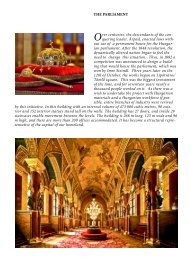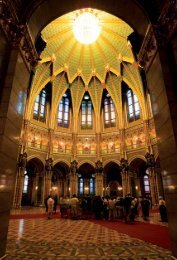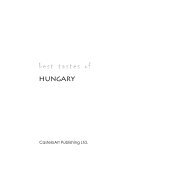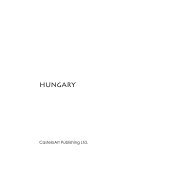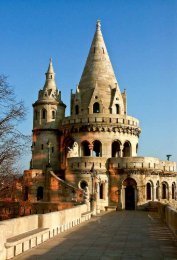Create successful ePaper yourself
Turn your PDF publications into a flip-book with our unique Google optimized e-Paper software.
ELIZABETH BRIDGE<br />
The first steps on today’s Erzsébet híd (Elizabeth<br />
Bridge) began echoing more than a<br />
hundred years ago. At that time this crossing<br />
point above the Danube was referred to as the<br />
bridge of the Eskü tér (Promise Square) and its<br />
pavement was fashioned from wooden cubes.<br />
Building began in 1897 when there were only<br />
two other bridges: the Lánchíd (Chain Bridge)<br />
and the Margit híd (Margaret Bridge). Although<br />
a price of two krajcár (the currency of<br />
the time, the equivalent of a penny) had to be paid<br />
in the little buildings at either end of the bridge, the<br />
citizens were glad to use the new bridge. The original<br />
bridge was bombed by the German troops in<br />
1945. Then, only years later (November 21, 1964)<br />
was the new construction handed over. Following<br />
the death of Queen Elisabeth, a decision was made<br />
to raise a worthy monument honouring the queen,<br />
using monies raised in a voluntary nationwide collection,<br />
in the city she loved so much: Budapest. The<br />
statue portraying Queen Elisabeth located at the<br />
Buda bridgehead of Elisabeth Bridge is to the praise<br />
of the creativity of György Zala.<br />
37



